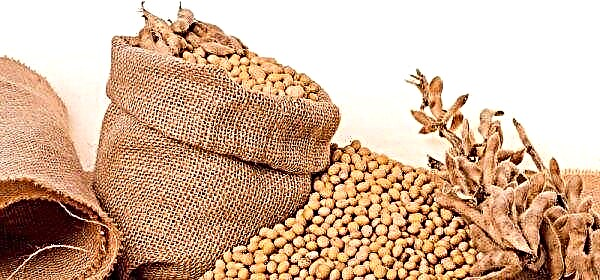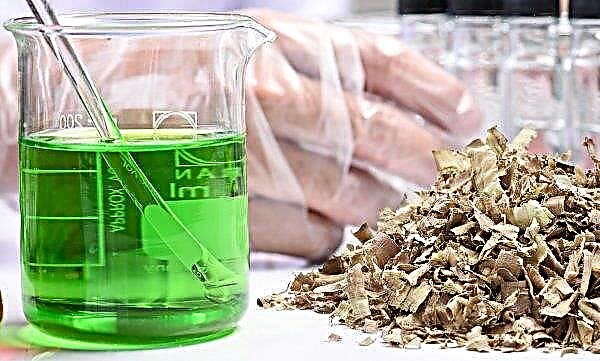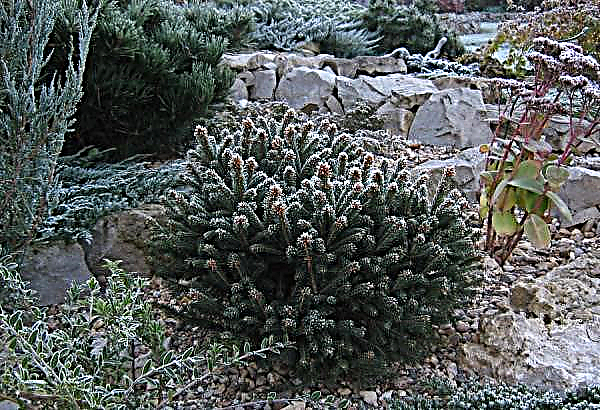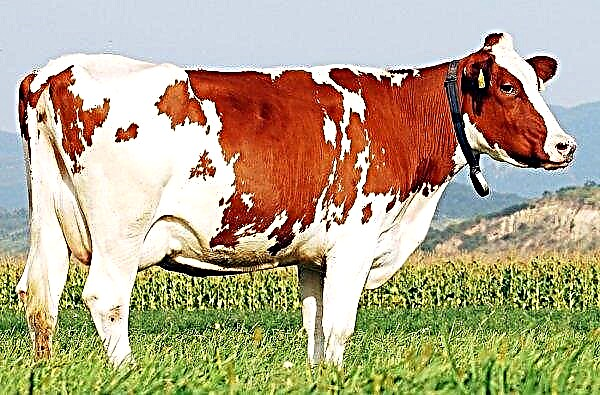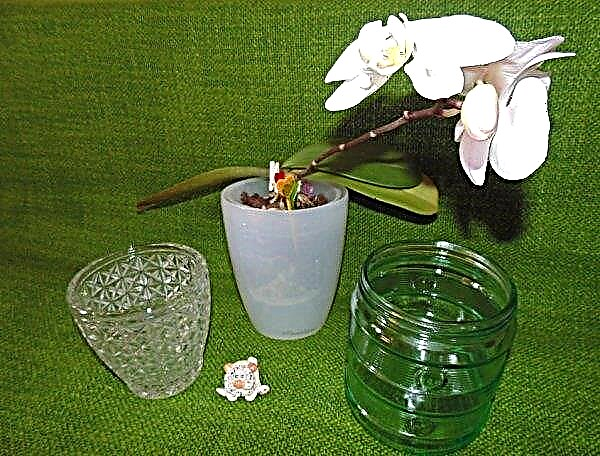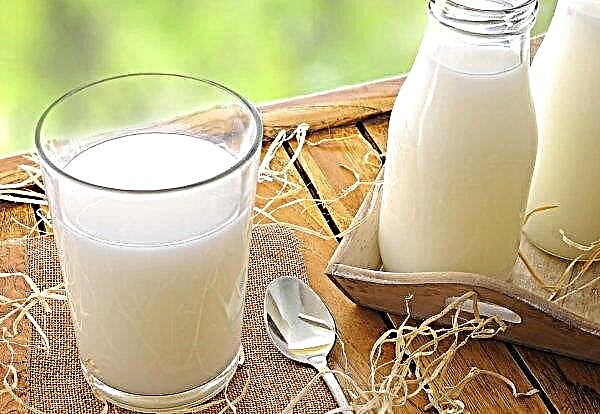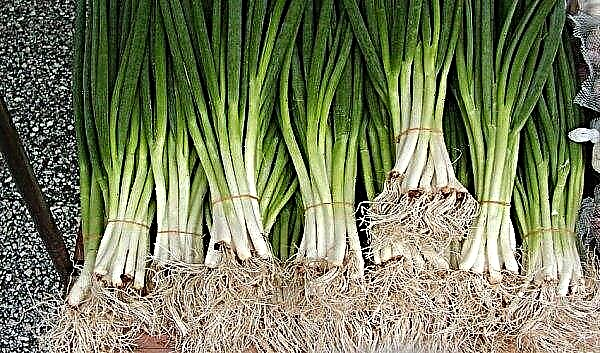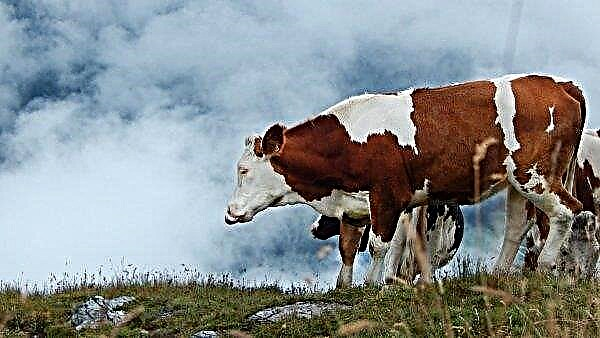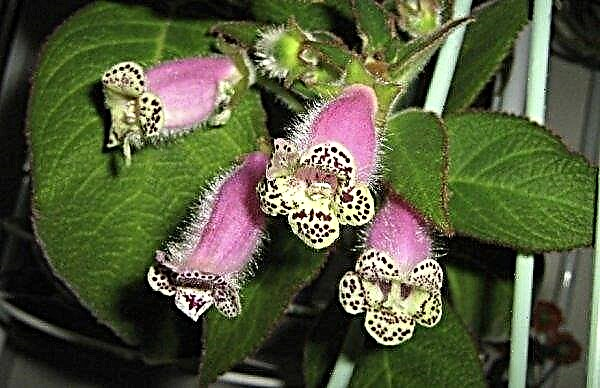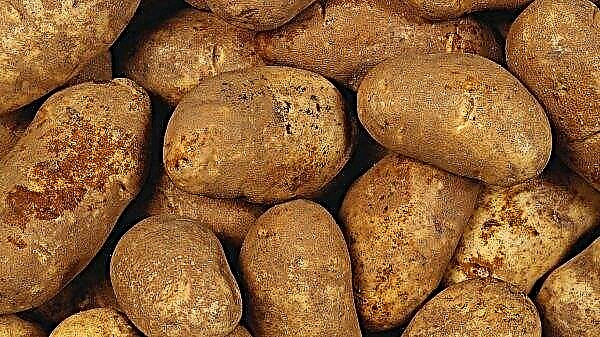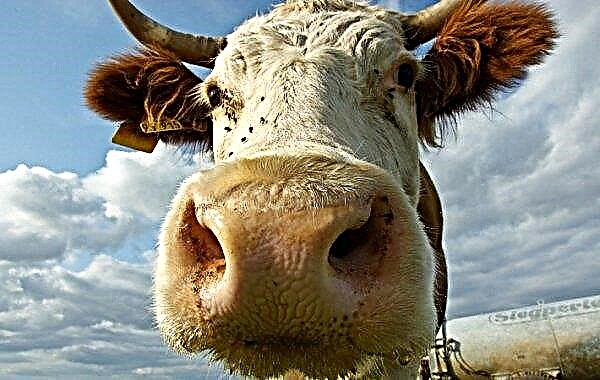Onion Strigunovsky local (it is also called the Strigunok) is a variety of onions of domestic selection of universal purpose, so it has long been loved by our mistresses. Bulbs are still good in that they belong to the northern varieties, so the range of suitable regions for its cultivation is quite wide. In the article we consider all the agrotechnical rules of cultivation and care of the culture.
Description and characteristics of the variety
The originator of the onion variety Strigunovsky local gives the following description of the culture:
- early ripe appearance;
- not demanding in care;
- high immunity to parasites and diseases;
- good ripening of the crop - 55–97%;
- there are 2–4 primordia;
- harvest with long-term storage (up to 6 months);
- good transportation qualities;
- the suitability of the fruit for consumption fresh and processed.

The main criteria by which the Strigunok onion differs from the other varieties:
- earlier ripening;
- low-grade variety;
- medium bulbs;
- more acute taste of fruits.
Did you know? The physician and naturalist Karl Linney assigned the Latin name “allium” to the onion, which is also called garlic. There is a version that in this word the root “all” from Celtic is translated as “burning”, which is confirmed by the sharp taste that both cultures possess.
Appearance of the variety
Strigunov bulbs have the following description:
- the fruits are rounded, there is a slight "pulling" to the top and bottom;
- integumentary scales of yellow, gray or pinkish shades;
- juicy scales - white and dense;
- bulbs taste pronounced;
- one onion weighs 40–80 g;
- on greens, leaves from one specimen are cut 2–4 times (after reaching a feather length of 35–40 cm);
- reproduction - seed, sowing;
- sowing seeds for one vegetation forms onion sets;
- Sevoc is well established in arid and humid climatic zones.

Ripening dates and productivity
The variety has early ripening - the interval from germination to harvest (in August) lasts 80-100 days. Biennial plants bear fruit in an amount of 2.0–3.5 kg per 1 m².
Important! To form a good crop of large bulbs, the best time for sowing crops in an open garden is considered to be the period from April 25 to May 5.
Plus qualities and possible disadvantages of the variety
- The main advantages of the variety are:
- early ripeness;
- high tolerance of temperature differences;
- good adaptability to various conditions and regions of growth;
- cultivation in one and two year old culture;
- good crop keeping;
- universal application.

Among the shortcomings of the Strigunov bulbs, there is only one thing - a sharp taste that not everyone likes.
Agriculture cultivating onions in the garden
For successful agricultural technology Strigunka it is important to carry out a number of preparatory measures, as well as to observe the correct technology for planting crops.
Preparatory work before landing
Pre-sowing work includes choosing the most suitable place for sowing and preparing seeds before laying in the soil.
Seat selection
When choosing a place for sowing onions, they are guided by the following principles:
- the site should be sunny or with light partial shade;
- a place with a flat and maximally open landscape;
- the soil is quite loose and fertile;
- the plot is selected where onions did not grow in the previous season.
Important! When choosing a bed for planting Strigunovsky onions, it must be borne in mind that this variety, like all onions, does not tolerate lowlands with stagnation of cold air and excessive humidity of the soil and air.
- Good predecessors for landing the Strigunka will be:
- any solanaceous (potatoes, physalis, eggplant, tomato, pepper);
- cabbage (broccoli, white, Brussels, etc.);
- legumes;
- greenery.

It is important to prepare the soil on the selected bed:
- In the fall, plant debris is removed from the site, and the earth is dug up.
- Organics are introduced: on 1 m² - 5 kg of compost (humus) + 25 g of superphosphate + 15 g of potassium sulfate.
- If the soil has an acid reaction, lime (500 g) is added to neutralize it.
- In the spring, urea is closed up on the site (10 g per 1 m²), again dug up, leveled with a rake and moistened.
Seed preparation
Growing onions in open ground with seeds is a fairly lengthy process. To accelerate it, the seeds must be prepared in advance.
Did you know? Onions contain more sugar than apples and pears. When frying, caustic substances evaporate, after which the product acquires a sweet taste.
The following manipulations will be required:
- 4 days before sowing, the seeds are poured into a bowl, poured with water at room temperature and left to soak.
- Well-moistened shifts are poured into the canvas bag (half), tied, and again lowered into the water for a day and a half (the water should change 4 times during this period of time).
- The swollen seed material is scattered with a thin layer on wet gauze and covered with the same layer of gauze.
- Prepared seeds are left for 3-4 days in a warm place (on the third day the germination process will already begin), and then sown.
- If the chernushka is assembled on its own, carry out the following manipulations:
- They must be disinfected with fungicides or potassium permanganate solution.
- After disinfection of seeds for 30 minutes, you need to warm in the oven (50 ° C).
- Soak the nigella for 40 minutes in aloe juice.
- Dry to a loose state and mix with chalk (when sowing, this will help to better see it in the ground).

Disembarkation technology
Sprouted seeds are sown using the following technology:
- The bed should have a height of 20 cm and a width of 1 m (these sizes help the soil to warm up well, which contributes to the optimal ratio of water and feeding conditions).
- Furrows with a depth of 1.5 cm are formed on the plot.
- Seeds are laid out after 5 cm from each other.
- The distance between the aisles is 20–25 cm.
- Crops are sprinkled with a layer of mulch from peat (1.5 cm), and then watered with a sprinkler.
- The bed is covered with a plastic film to create a greenhouse microclimate, where the seeds can germinate quickly.
- After emergence, the shelter is removed.

Onion Care
Growing onions Strigunka requires proper care for it: timely and regular watering and top dressing, loosening the soil and removing weeds, and in case of damage to diseases or parasites, treatment with fungicidal or insecticidal preparations.

Watering and fertilizing
Watering for the culture is organized on the basis that it should not dry out or suffer from excess moisture (in the first case, the feathers will become bluish-white, and in the second - the greens will become pale).
In view of this, weather conditions must be taken into account:
- if the summer is dry and hot weather, then you need to moisten the onion 1 time in 2 days;
- if it rains every other day, then additional watering will lead to an excess of moisture and rotting of plants;
- under favorable weather conditions, the culture is watered, on average, once every 7 days, at the rate of 5-10 liters per 1 m²;
- during the ripening period of the crop (July), watering should be reduced.
In order for greens to grow faster onion, it is necessary to fertilize the crop according to the following scheme:
- Organic chemistry is used - 250 ml of urea (or bird or cow droppings) + 10 l of water; contribute to 1 m² - 3 l of solution.
- After 14 days, top dressing is repeated.
- After the onions reach the size of a walnut, a third top dressing is carried out (the same recipe).
Important! The first top dressing of onions is carried out in the phase of growth of greens.
Loosening the soil and weeding from weeds
Care for onions involves repeated cultivation of row-spacings, manual weeding of weeds in rows.
Loosening provides:
- cleanliness of landings;
- moisture retention in the earth;
- good aeration;
- elimination of soil crust after rain;
- improvement of nutritional and thermal conditions.

Loosening is carried out the next day after moistening the soil, trying to carefully process the aisles, without damaging the plants and not filling them with earth.
Plant pests and diseases
Although the Strigunovsky variety of onions is resistant to disease and insect attack, it can be exposed to these problems if not properly maintained.
Some diseases affecting onions:
- White rot. It can develop if there is acidic soil on the site that has not been lime, as well as soil with an excess of nitrogen. Affected specimens must be removed from the beds. Harvested before storage, for preventive purposes, showered with chalk.

- Gray rot. It is caused by a fungus that actively spreads in wet and rainy weather and with excessive watering. Sick products are removed. As preventive measures, it is necessary to strictly observe the agricultural technology of the culture, and in the spring treat onions with copper sulfate.

- Jaundice. Viral damage, deforming the flowers and forming chlorotic spotting on the feathers. Viral disease is not treated, and if symptoms are found, then all diseased plants are immediately removed from the site, and the beds with culture and row spacing are kept without weed grass. Prevention is the correct crop rotation.
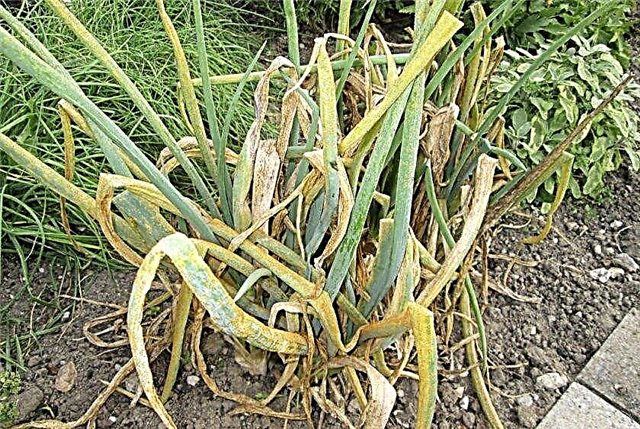
- Fusarium. A fungal disease that affects onions during the hot season. An onion fly can spread the disease. Due to the disease, rotting and dying of tissues develops, which is manifested by yellowing of the ends of the leaves. For the purpose of prevention, seed is warmed up before sowing.
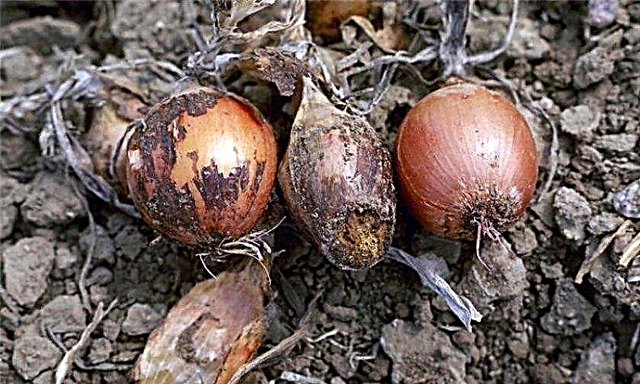
Pests dangerous to onions:
- Stealthy hunter. The parasite is destroyed with the help of systemic insecticides (Nurell D, Pirinex Super, Newstar, Nurimet Extra).
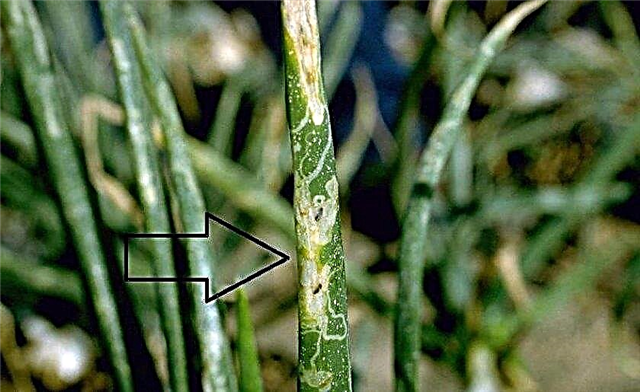
- Onion moth. Pest control and prevention involves the timely removal of weeds from the plot, and at the end of the vegetative period of the crop - all plant residues. It is also important to comply with agricultural regulations and crop rotation.
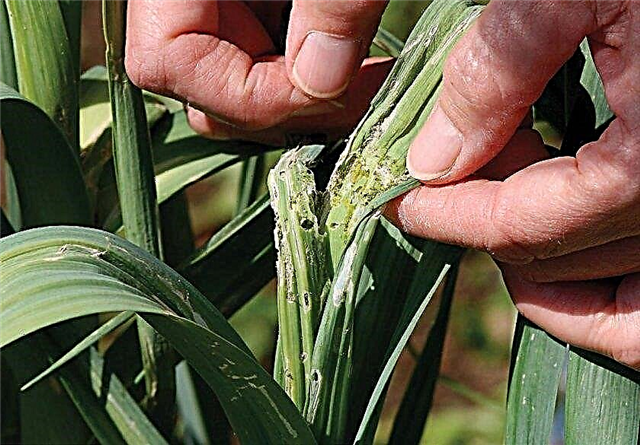
- Onion fly. The pest does not tolerate the smell of carrots, so it is advisable to alternate onion plantings in rows of carrot plantings.
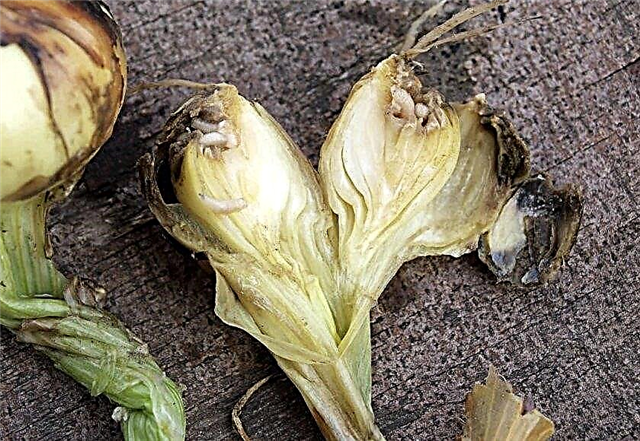
- Sprout fly. Destroy the larvae of a harmful insect will help a deep winter digging of the land allotment.
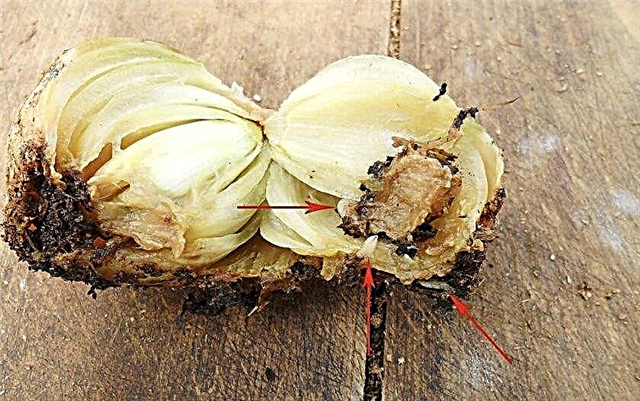
- Medvedka. The pest can be lured by traps: in several places in the garden, dig holes 0.5 m deep, lay horse manure at the bottom and cover it with wooden shields. When the bear accumulates to warm up, they are removed and destroyed.
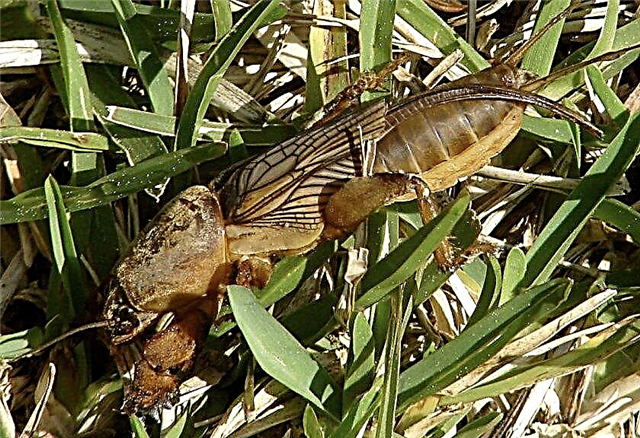
- Scoop (winter, cabbage, garden). Parasite caterpillars can be destroyed by treatment of plantings with solutions of Bitoxibacillin (1%) or Gomelina (0.5%).
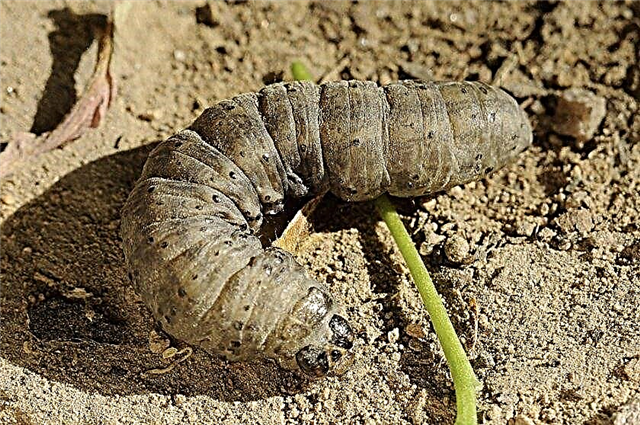
- Tobacco thrips. Eliminate a tiny harmful insect by treating plantings with Actellik and Karbofos preparations (0.15%).
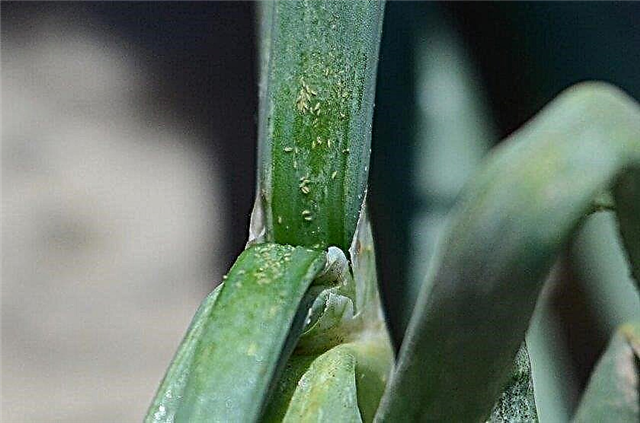
Harvesting and storage
Bulbs of the Strigunovsky variety are harvested, guided by the following nuances:
- Upon reaching the end of the growing season, when the plants of the tops become yellowed and laid down on the ground.
- Onion ripening is accelerated 2 weeks before the end of the growing season, breaking its feathers.
- The ripened bulbs are dug up with a pitchfork and raised above the bed.
- The harvested crop is laid out and dried right there in the garden (in cloudy weather, the onions are dried indoors).
- After drying, the crop must be harvested, cut the tops, leaving a neck 6 cm long, cut the roots, sorted by quality and size.
- Sort and sort separately.
- Harvest in boxes or nets and put in storage.
- Store the crop in cool and dry places (basement, cellar) at a temperature of about 0 ° C or slightly higher.
Did you know? Onions can anesthetize the bites of wasps, bumblebees and bees: for this purpose, the bitten place is treated with juice squeezed from a piece of onion.
In general, onions of the Strigunovsky variety do not require excessive care. Nevertheless, compliance with the basic rules of agricultural technology is desirable - without this, culture cannot please the gardener with a rich harvest of large onions.












